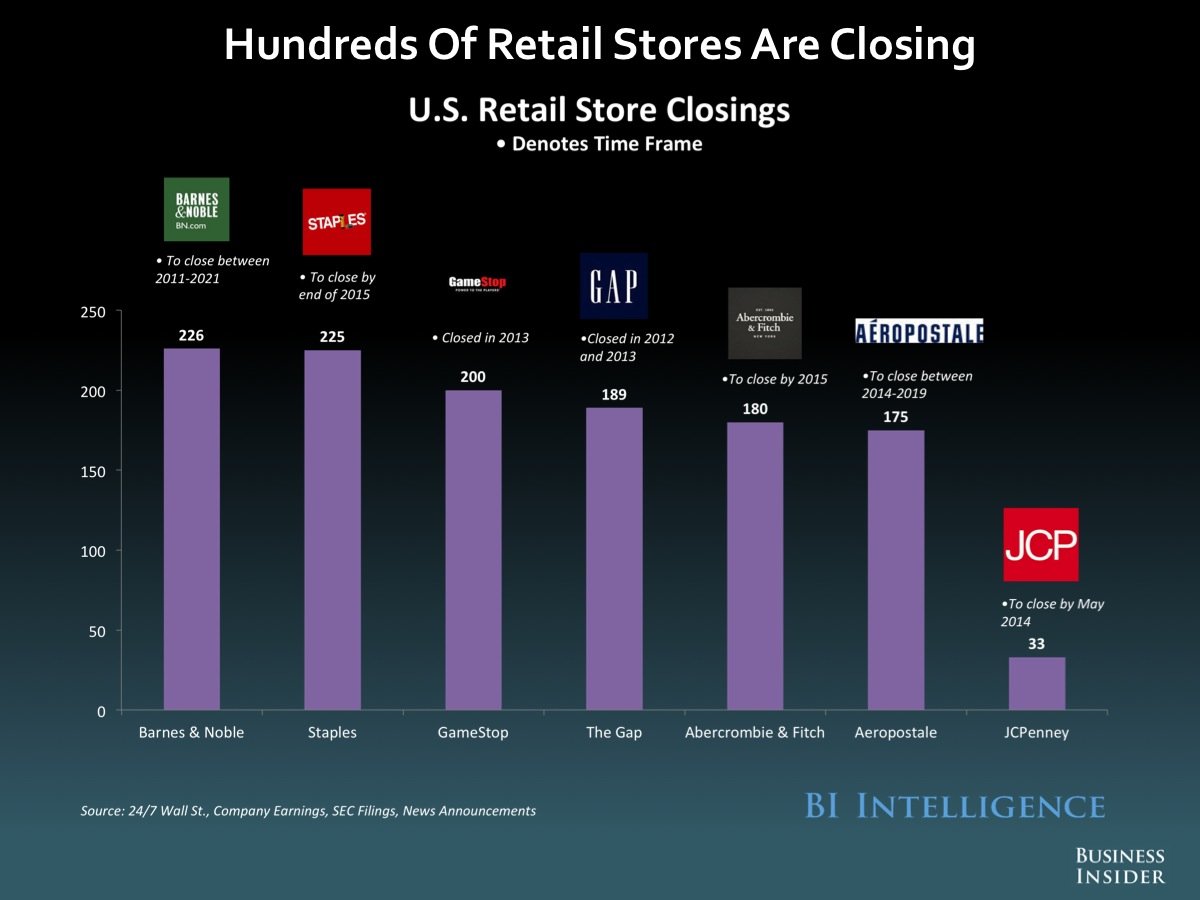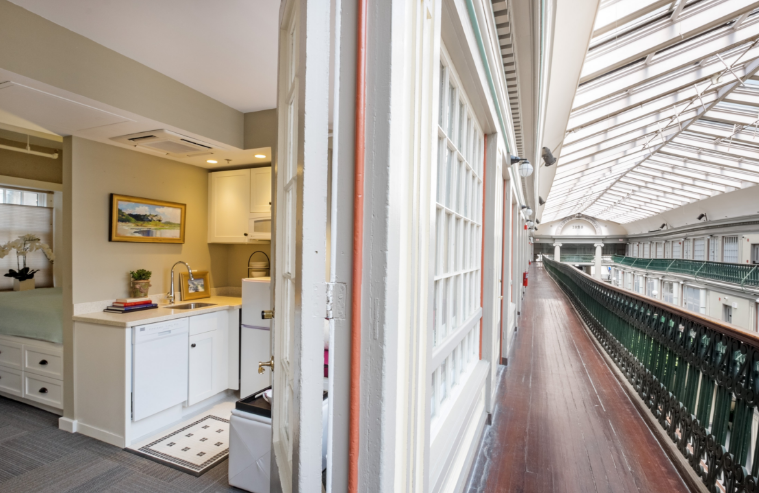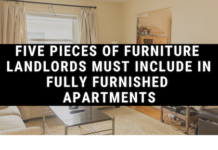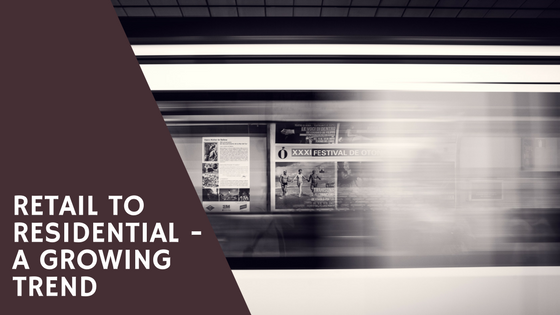The retail model is not dead…however, it has been experiencing a titanic shift over the last several years with the help of Amazon and other online retailers who offer a shopping experience online, and a delivery model that ships directly to your doorstep.
As a result, what used to be American behemoths of retail are on the verge of extinction while others attempt to make strides to accommodate this shift in consumerism.

Companies like JC Penny, Sears and KMart are hanging by a thread while Macy’s, Nordstrom, Kohl’s and Barnes & Noble (and many others) attempt to survive by offering more online options that include shipping discounts.
While this article is not going to focus on consumer trends, these epic shifts beg the question – What is going to happen to the massive amount of retail space that becomes available when a large retail outlet closes its doors?
The answer could be in housing.
There are numerous examples of retail to residential shifts, and the idea is not new. In the mid 90’s, New York City has an excessive amount of retail space as 25% of the 100 million square feet of commercial space was vacant. There was noted success in retail/commercial to residential conversions that took place at that time to accommodate the city’s population increase. There are examples of this in nearly every major market market in the U.S., and it has been going on for years. But what is different now? It’s simple: Big box retailers continue to struggle and corporate America, in an effort to be more competitive, is now allowing for more remote work opportunities. Combine that with a cultural shift in how consumers shop (hint, it’s mainly online), and we may see opportunities like never before for developers to transition dying commercial space into residential housing, and it could not come at a better time.
For example, a KMart recently closed its doors in south Denver and the space will be converted into 300+ multifamily rental units in a neighborhood where “building up” is not an option. In short, the dense urban neighborhood space requires a transit friendly and pedestrian-oriented neighborhood to accommodate the development plan. For the last several years Denver has been one of the fastest growing metro markets in the country. In fact, in Q1 of 2017, Denver delivered 3,246 new apartments, the most in any quarter since 2002. What’s more interesting is that the market absorbed the record amount new inventory without depressing rents. In fact, rental amounts are actually UP while vacancy rates DOWN. For developers, the challenge in a good market like Denver is finding attractive land to build on and struggling retail space could help provide the much needed space.

There are potentially going to be hundreds of these opportunities all across the country as traditional retail outlets continue struggle. What is interesting about this shift is that retail to residential transitions may actually create MORE opportunities for viable retail traffic. How? Consumers prefer online, but there are still needs for face to face interactions that are outside of the traditional strip mall needs (groceries, coffee, haircut, dry cleaners etc.). Experience driven commerce provide opportunities that either blend the online brand with the physical shopping experience (Nike and Apple stores come to mind), or offer a unique experience for a shopper that they cannot get anywhere else. This is especially effective when it blends with the surrounding neighborhood and can be accessed by the community via bicycle or simply through walk up traffic.
While every struggling retail outlet is not going to translate to a successful housing project, epic shifts in how consumers shop combined with the reality of those impacts on brick and mortar environments, there will certainly be ample opportunities for new housing. With the right location and some creativity, this could revitalize struggling neighborhood while offering more housing options when supply continues to be short.




















